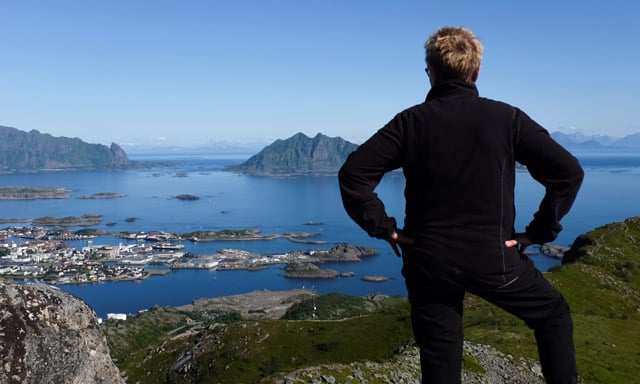TRAVEL
Norway considers tourist tax to deal with its growing popularity
Norway is currently enjoying a newfound level of popularity amongst tourists.
Published: 27 July 2017 17:29 CEST

A growing number of politicians argue that growing tourism numbers are leaving areas like Lofoten in dire need of new funding sources. Photo: Bo Johanson / NTB scanpix
Spurred in part by ‘the Frozen effect’ that has seen tourism rise sharply since Disney's 2013 film Frozen, which was developed with the support of Norway's tourism agency, some officials began warning that the country was experiencing “too much of a good thing”.
Now a number of politicians are suggesting the implementation of a tourist tax to help local communities deal with the influx of visitors.
Local Nordland party leaders of the Socialist Left Party, the Christian Democrats, the Liberals and the Red Party have backed a new tourist tax to finance the upkeep needed as a result of the growing tourist numbers.
This summer has seen news reports about roadside bathroom facilities in desperate need of maintenance and the ongoing safety concerns at popular tourist spots like the famous Trolltunga promontory, which has become such a popular destination for tourists that mountain rescue services can hardly manage to come to the aid of all of the ill-prepared visitors who run into trouble on their hike.
Spurring the call for a tourist tax is the method in which the Norwegian state transfers funds to local municipalities. The funding is largely based on the number of year-round residents, which means that tourist destinations like the Lofoten archipelago are at a significant disadvantage because its public infrastructure is worn down by tourists who are not factored in to the economic distribution.
Thus Nordland is seeing growing political support for a tourist tax, and NRK reports that the idea is also catching hold in Western Norway.
The Christian Democrats’ leader in Nordland, Dagrun Eriksen, is one of the local politicians pushing hard to introduce a tourist tax in the area.
“Down south [in Oslo, ed.] they have no idea of the extent of what Lofoten is facing. So the tourists also need to contribute their fair share and a tourism tax into a shared fund could raise the money needed for necessary infrastructure projects,” Eriksen told broadcaster NRK.
Eriksen is likely to have a hard time convincing the Norwegian government to go along with a tourist tax however. In a tourism report issued this spring, the government argued that Norway is already a very expensive destination and that an additional tourist tax would hurt the competitiveness of the national tourism industry.
“The tourism industry needs to find a suitable way to finance this on its own. They have already delivered good solutions in similar situations,” Dilek Ayhan, the state secretary at the Norwegian Ministry of Trade, Industry and Fisheries, told VG.
Ayhan was backed by Progress Party spokesman Erlend Wiborg, who pointed out that despite Norway’s newfound popularity amongst foreign tourists, it is still primarily Norwegians who holiday in the country.
“Norway is already an expensive country to take a vacation in,” Wiborg said. “If there is one thing we don’t need now then it is more taxation that will result in fewer tourists and possibly a loss of [tourism] jobs. The solution could be as easy as making people pay for the [public] toilet when they use it.”
Url copied to clipboard!


 Please whitelist us to continue reading.
Please whitelist us to continue reading.